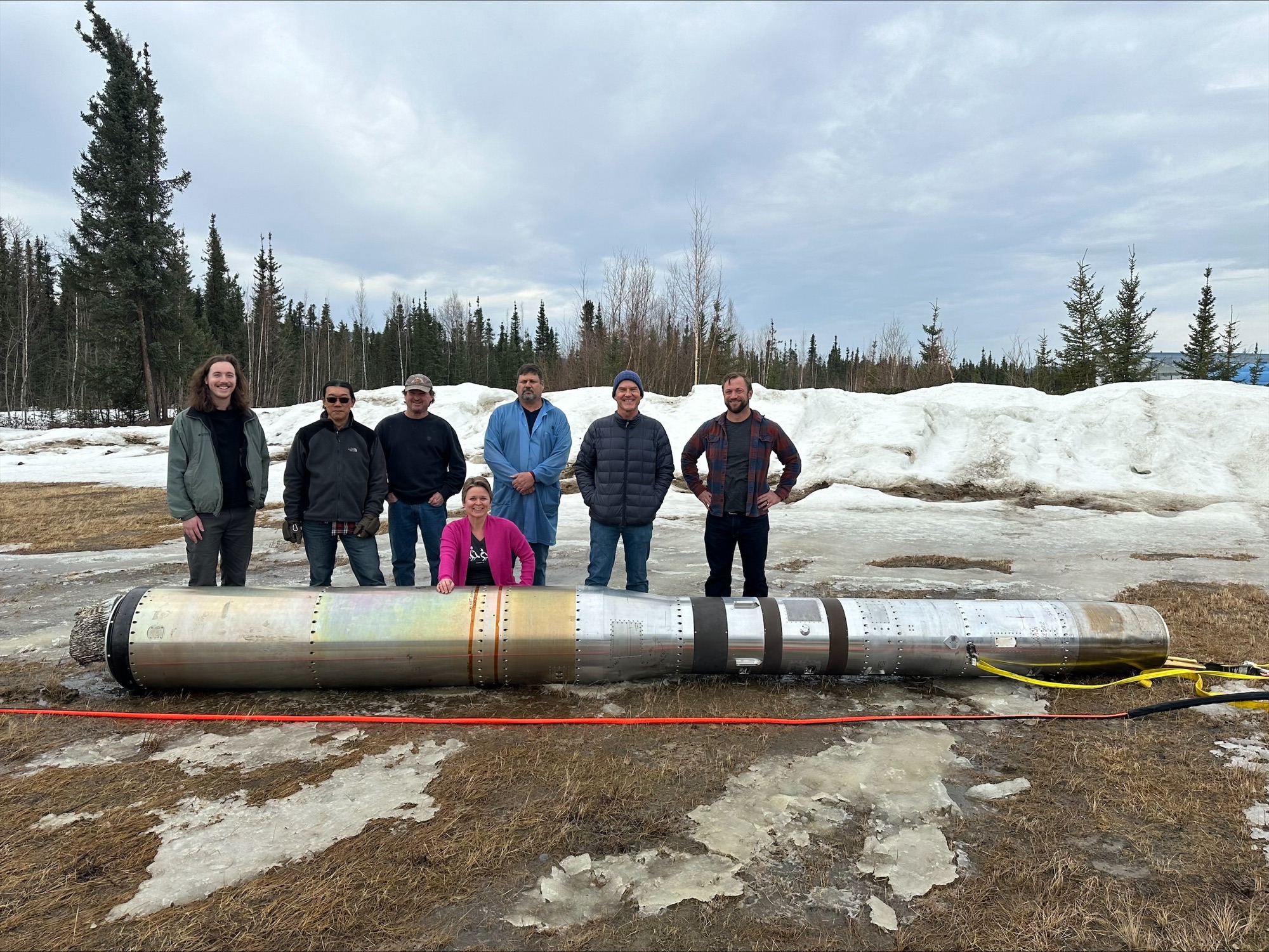4.05.2024

After months of preparation and years since its last flight, the upgraded High Resolution Coronal Imager Flare mission – Hi-C Flare, for short – took to the skies for a never-before-seen view of a solar flare.
The low-noise cameras – built at NASA’s Marshall Space Flight Center in Huntsville, Alabama – are part of a suite of state-of-the-art instruments on board the Black Brant IX sounding rocket that launched April 17 from Poker Flat Research Range in Alaska. Using the new technology, investigators hoped to study the extreme energies involved with solar flares. The Hi-C Flare experiment mission was led by Marshall.
“This is a pioneering campaign,” said Sabrina Savage, principal investigator at Marshall for Hi-C Flare. “Launching sounding rockets to observe the Sun to test new technologies optimized for flare observations has not even been an option until now.”
It was the third iteration of the Hi-C instrument to take flight, but its first flight with ride along instruments, including the COOL-AID (Coronal OverLapagram – Ancillary Imaging Diagnostics), CAPRI-SUN (high-CAdence low-energy Passband x-Ray detector with Integrated full-SUN field of view), and SSAXI (Swift Solar Activity X-ray Imager). Following a month of payload integration and testing in White Sands, New Mexico, investigators completed final launch site integration at the Poker Flat Research Range in Alaska.
Each morning of the two-week launch campaign window, the team spent about five hours preparing the experiment for launch, followed by up to four hours of monitoring solar data for a flare that registers as C5-class or higher with duration longer than the rocket flight. The launch finally occurred on the penultimate day of the campaign window.
“The Sun was unusually quiet throughout the campaign despite numerous active regions,” said Savage. “Both teams were getting nervous that we would not launch, but we finally got a nice long-duration M-class flare right before the window closed.”
The Hi-C Flare mission launched at 2:14 p.m. AKDT, just one minute after the FOXSI-4 (Focusing Optics X-ray Solar Imager) mission led by the University of Minnesota. Once in air, sensors on the Hi-C Flare rocket pointed cameras toward the Sun and stabilized instrumentation. Then, a shutter door opened to allow the cameras to gather about five minutes of data before the door closed and the rocket fell back to Earth.

The rocket landed in the Alaskan tundra, where it remained until conditions were safe enough for the team to retrieve it and begin processing the collected data.
“For launches into the tundra, we have to wait a few days for the instrument to get back to us and then to be dried out enough to turn on,” said Savage. “It was an anxious few days, but the data are beautiful and were worth the wait.”
Investigators weren’t just testing new technology, either. They also used a new algorithm to predict the behavior of a solar flare, allowing them to launch the rocket at the ideal time.
“To catch a flare in action is really hard, because you can’t predict them,” said Genevieve Vigil, technical and camera lead for Hi-C 3 and COOL-AID at Marshall. “We had to wait around for a solar flare to start going, then launch as it’s happening. No one has tried to do that before.”
Fortunately, their method was a success.
“We are still processing the data from all four instruments, but the data from Hi-C 3 and COOL-AID already look fantastic,” said Savage.
“The COOL-AID data is the first spectrally pure image in a hot spectral line that we know of,” said Amy Winebarger, project scientist at Marshall for Hi-C Flare.
The Hi-C experiment is led by Marshall Space Flight Center in partnership with the Smithsonian Astrophysical Observatory in Cambridge, Massachusetts, and Montana State University in Bozeman, Montana. Launch support is provided at Poker Flat Research Range in Alaska by NASA’s Sounding Rocket Program at the agency’s Wallops Flight Facility on Wallops Island, Virginia, which is managed by NASA’s Goddard Space Flight Center in Greenbelt, Maryland. NASA’s Heliophysics Division manages the sounding-rocket program for the agency.
Quelle: NASA
